Title : Angioinvasive mucormycosis following SARS-CoV-2 infection:Case report
Abstract:
Introduction: Invasive fungal infection caused by fungi of the Mucorales order is particularly associated with states of immunocompromise and clinical conditions characterized by hyperglycemia and acidosis. During the SARS-CoV-2 pandemic, an increased prevalence of hyperglycemia and immune alterations was observed among infected patients. Consequently, there has been a rise in the incidence of invasive fungal infections following recovery from COVID-19.
Objective: To report a severe case of mucormycosis whose incidence has increased after SARS-CoV-2 infection.
Methods: A 54-year-old male patient with a past medical history of type 2 diabetes mellitus, on metformin and NPH insulin, was admitted with complaints of severe right periorbital pain, described as throbbing, associated with blurred vision and slowness in performing daily activities. He had a recent history of hospitalization, 20 days prior to symptom onset, due to SARS-CoV-2 infection, requiring noninvasive ventilatory support. During this period, the patient experienced marked hyperglycemia while receiving dexamethasone 6 mg/day for 16 days. Hyperglycemia persisted after corticosteroid withdrawal, and the patient was discharged on insulin therapy.
Results: Due to a presumptive diagnosis of sinus infection associated with neurological alterations, the patient was admitted for further investigation. Brain MRI revealed findings compatible with angioinvasive fungal sinusitis extending to the inferomedial aspect of the right frontal lobe. Histopathological analysis of sinus tissue obtained during endoscopic sinus surgery demonstrated chronic sinusitis of fungal etiology, and culture was positive for Mucor. Antifungal therapy with liposomal amphotericin B (5 mg/kg/day) was initiated. The patient remains under treatment, presenting partial clinical improvement of symptoms.
Conclusion/Final Considerations: Mucormycosis is a severe fungal disease that can manifest in various clinical syndromes, with rhino-orbitofrontal involvement being the most frequent form of angioinvasive infection. Immunological alterations related to corticosteroid use and hyperglycemia triggered by COVID-19 act as predisposing factors for the development of the disease. With the increased environmental proliferation of Mucorales species, these conditions create an opportunistic setting for invasive fungal infections with high lethality. It is essential that physicians maintain a high index of suspicion for fungal infection in post-COVID-19 patients so that early diagnosis and prompt antifungal therapy can be initiated, given the high morbidity and mortality associated with this condition.



